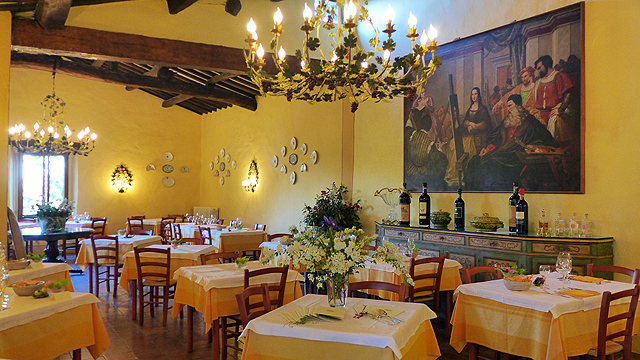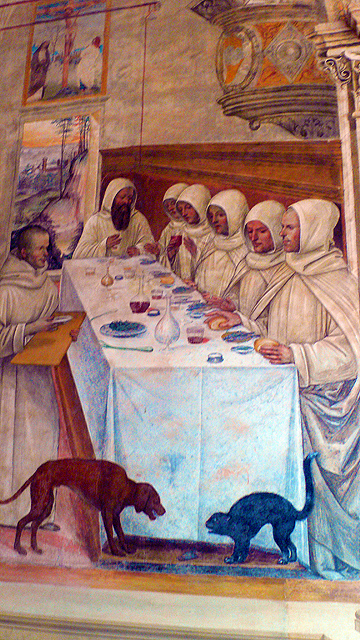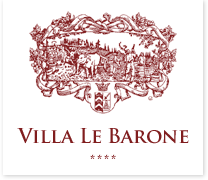
Table customs and traditions have been often reflected in Western paintings. This is particularly true for paintings from the middle Ages to the Renaissance in Florence, which are a true chronicle of life at that time and show the evolution of table habits. You can admire these paintings in the museums and churches of Florence or Siena, and in the surroundings of Villa le Barone. Perhaps you will look at them with different eyes after having read this article! You will also appreciate the care with which the table is put today in Villa le Barone!
The artists were chroniclers of their time, and the various paintings of the Middle Ages to the Renaissance show the evolution of table customs in Tuscany at that time. It is in the representations of the evangelical episodes that table settings first appear, and especially in the Last Supper’s representations. For example, in the paintings of Giotto (1266-1337), Duccio di Buoninsegna (1255-1318), Maestro Pisano (1215-1284), the essential elements of a table in the Middle Ages can be seen: a simple white tablecloth, plates in front of the guests, a unique dish where one takes the food with the hand to bring it directly to the mouth, in the center of the table, a single knife with a wooden handle and a long blade, a few glasses. In the 15th century, with Domenico Ghirlandaio (1449-1494) and Leonardo da Vinci (1452-1519), the tablecloths are embroidered, there is a plate of metal for each guest. The spoon and the knife are the first table cutlery to appear on the table. The spoon was of wood, round, but its dimensions were reduced and it was given an oval shape. There was only one knife, used by all to cut the food, and the pieces were brought to the mouth with the hands. One of the first representations of the fork, born not as an individual cover, but to take the food in the common dish, can be found in the Abbey of Monte Olivetto (near Villa le Barone), in one fresco by Giovanni Bazzi detto il Sodoma (1477-1549). Over time, the functions of the tip of the knife will be filled by the fork, and this tip will always be more rounded and the blade less sharpened to avoid the negative impression of an offensive weapon. Note also that one wiped his mouth with the tablecloth, and the use of the napkin appears only at the end of the fifteenth century.

It was Catherine de Medici’s who introduced the use of the fork to the court of France. She would have said at a banquet in Fontainebleau in 1535 “Ladies and Gentlemen, you seize the meat in pieces with your fingers but grasping the meat with your fingers is considered improper and intolerable in the city from which I come,” and she showed a curious object with three pointed metal teeth: the fork.
Today table setting has been enriched, with different cutlery for each dish. The blade of the knife is rounded, it is less tapered, and it is oriented towards the plate, thus losing its offensive character. Whereas in France the forks are arranged points downwards, in Italy, as in England and the USA, they are arranged points in the air. This is how you will find your table put in the restaurant of the hotel Villa le Barone, with beautiful “Ginori” plates and all the necessary types of glasses to taste the exquisite wines of Chianti Classico!
